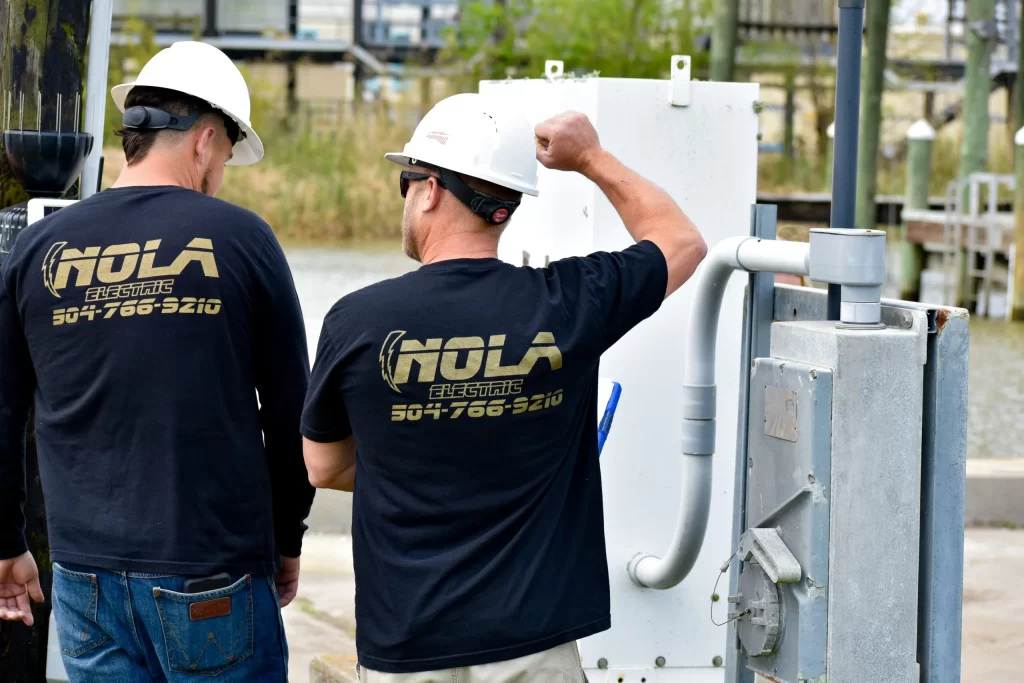If you’ve ever experienced a tripped circuit breaker, you know how frustrating it can be especially when it happens unexpectedly. Whether it’s disrupting your indoor electrical systems or affecting your outdoor lighting, a tripped breaker is a sign that something in your electrical setup isn’t functioning as it should. In this article, we’ll explore some of the common causes of tripped circuit breakers, especially as they relate to outdoor lighting installation and landscape lighting safety. Plus, we’ll share practical tips on how to prevent these disruptions.
What Is a Circuit Breaker, and Why Does It Trip?
Before diving into the causes, it’s important to understand what a circuit breaker is and why it trips. A circuit breaker is an electrical safety device designed to protect your home from overloads and short circuits by interrupting the flow of electricity when necessary. When too much current flows through the circuit, it causes the breaker to “trip,” cutting power to prevent damage to your electrical system and reduce the risk of fire.
Now, let’s look at some of the most common causes of tripped circuit breakers and how to avoid them.
1. Overloaded Circuit
One of the most common reasons for a tripped circuit breaker is an overloaded circuit. This occurs when too many devices are plugged into a single outlet or circuit, causing the electrical load to exceed the circuit’s capacity.
How to Prevent It:
To avoid overloading your circuits, try to distribute your electrical appliances and lighting fixtures across different outlets and circuits. If you’re planning outdoor lighting installation or additional electrical devices in your home or yard, make sure they’re on separate circuits, especially for landscape lighting. Additionally, upgrading to higher-capacity wiring can help support the increased demand without tripping your circuit breakers.
2. Short Circuit
A short circuit happens when a hot wire (carrying electricity) comes into contact with a neutral wire, creating a dangerous situation that can cause the circuit breaker to trip. This can happen in wiring that has been damaged or worn out, especially in areas exposed to moisture, like outside wiring or your exterior electrical setups.
How to Prevent It:
Make sure your electrical wiring is properly installed and maintained. For outdoor lighting installation or any outdoor electrical setup, ensure that the wiring is well-protected from the elements. Water, pests, or weather can damage your wires, so it’s important to use outdoor-rated cables and connectors. When installing new landscape lighting, opt for high-quality, weather-resistant materials to avoid issues like shorts or corrosion.
3. Ground Fault
A ground fault occurs when a live wire touches a grounded surface, which can create a dangerous electrical hazard. Ground faults are especially common in areas like bathrooms, kitchens, or around exterior setups like landscape lighting that are exposed to rain, dampness, or moisture.
How to Prevent It:
To reduce the chances of a ground fault, use a Ground Fault Circuit Interrupter (GFCI), especially for outdoor electrical setups, including your landscape lighting. GFCIs are designed to shut off power immediately when they detect a ground fault, keeping you safe from electrical hazards. For outdoor lighting installation, always ensure that electrical fixtures are rated for outdoor use and properly sealed to prevent moisture from entering the electrical components.
4. Faulty Appliances or Wiring
Old or faulty appliances and wiring can easily trip your circuit breaker. This is especially true if you have an older home or have recently added new electrical appliances. If an appliance or wiring is damaged or outdated, it can draw more current than the circuit is designed to handle.
How to Prevent It:
When installing new electrical appliances or doing any exterior electrical setups, ensure that your home’s wiring is up to code and in good condition. For outdoor lighting installation, make sure you’re using modern, safe wiring practices and equipment. If you’re unsure about your home’s wiring, it’s worth having an electrical inspection by a professional to ensure everything is functioning correctly and safely.
5. Weather and Storms
In Louisiana, our weather can take a toll on both indoor and outdoor electrical systems. Heavy rains, high winds, and lightning can cause electrical surges or damage to wiring, especially in exterior electrical setups. This can lead to a tripped circuit breaker and even more severe issues if not addressed promptly.
How to Prevent It:
To avoid weather-related electrical problems, ensure that your landscape lighting and outdoor lighting installations are properly protected. Use surge protectors to safeguard your circuits against power surges caused by lightning. Additionally, consider installing weatherproof covers for outdoor outlets and lighting connections to prevent moisture damage.
When to Call a Professional for Help
If your circuit breaker continues to trip despite your best efforts to prevent issues, it’s time to call a professional. Constant tripping could be a sign of a deeper electrical issue, such as faulty wiring, a broken circuit breaker, or even a more serious electrical hazard. A licensed electrician can assess your system, identify the root cause of the problem, and make necessary repairs or upgrades.
If you’re planning outdoor lighting installation or other exterior electrical setups, it’s always best to consult with a professional who can ensure everything is wired correctly and safely. Proper installation not only helps prevent tripped circuit breakers but also ensures that your home and landscape lighting are safe and functional for years to come.
Contact NOLA Electrical Services for Expert Help
When it comes to electrical issues whether it’s a tripped circuit breaker or outdoor lighting installation trust the experts at NOLA Electrical Services. Our team is here to help with everything from diagnosing roof lighting safety to ensuring your exterior electrical systems are properly installed and protected.
For more information or to schedule a consultation, reach out to us today:
📍 Address: Visit Our Website
📞 Phone: (504) 766-9210
✉️ Email: bp@nolaelectricco.com

